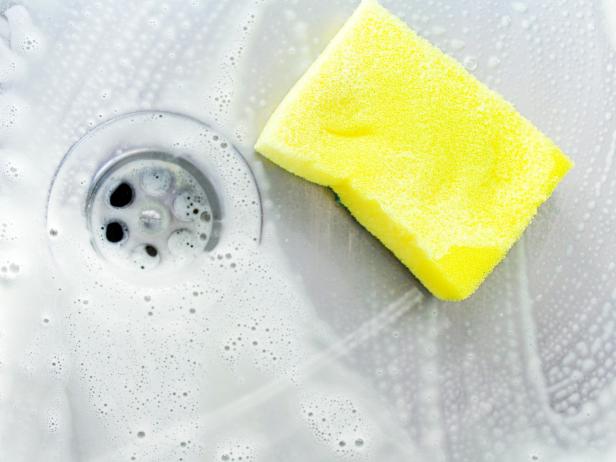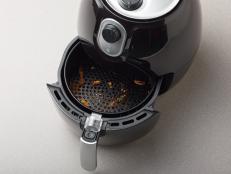How to Sanitize a Kitchen Sponge
Your kitchen sponge has a dirty secret: It may be one of the filthiest spots in your home. Here are two ways to clean it.

Michael Bodmann, Michael Bodmann
Sometimes our cleaning tools need a good cleaning themselves. Kitchen sponges — the squishy soft ones made of cellulose fiber — are sneaky harbors of bacteria, mold and yeast. They provide a damp oasis for these invisible foes that, when left to thrive, can become a microscopic colony of hazards to your family's health. Before you swear off sponges for good, here are two ways the scientists at the United States Department of Agriculture recommend cleaning them.
Microwave:
A zap in the microwave is the most effective method for killing up to 99.9999 percent of the bacteria, mold and yeast lurking in your sponge, according to researchers at the USDA and Michigan State University Extension. Before you zap, make sure your sponge doesn’t contain any metallic material or have a plastic scour pad attached. Then, thoroughly soak it in water (a dry sponge could catch on fire) and microwave it in a microwave-safe bowl on high for 1 minute. Let the sponge cool for 10 to 15 minutes in the microwave, then remove it and squeeze out any excess water.
Dishwasher:
Unlike the microwave method, you can give almost any kind of sponge a steamy-clean joyride along with your dishes. Place it in the top rack of the dishwasher and set the machine to the hottest and longest cycle with the option of an additional dry cycle. Researchers at the USDA say this method eliminates up to 99.9998 percent of all microbes.
Try to sanitize your sponge every day, and be sure to swap it out with a fresh one every 1 to 2 weeks — even with regular cleaning, a sponge won't last forever. Toss your sponge the instant it smells funky — that means something nasty is probably brewing. Finally, only use your sponge to clean dishes in the sink. If you use the same sponge to clean your kitchen countertops, dining table, cutting boards and appliances, you could spread germs. Instead, use paper towels or disposable disinfectant wipes for general clean-up and spills (especially eggs and raw meat) or use clean, dry dish towels, making sure to wash them after each use.































































